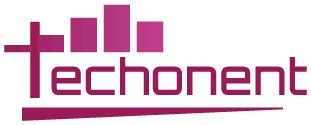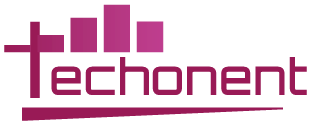
The IoT is not just for later. It's here now. It's making our daily lives different. Homes, businesses, and whole cities are joining together. Smart machines are learning what we like, and the things we wear are keeping track of our health. The machines always collect and share information, mixing the real and online worlds. But how will they chat with each other in the future? We explore the new ways IoT things will link up, shaping the connected change.
The Challenge of Connectivity:
Good connections are important for making IoT work well. Wi-Fi and Bluetooth have limits, though. Wi-Fi can have problems with range and getting signals through, while Bluetooth can only go short distances. As more and more devices get connected, these limits become clearer. This is why we need better and more reliable ways of connecting things.
Emerging Trends in IoT Connectivity:
Here are some of the cool fads that are modifying the way how IoT devices connect:
1. Low-Power Wide-Area Networks (LPWANs): Designed for IoT, these networks provide long-range connectivity while using little power. They suit battery-powered devices that need to send data over long periods. Examples include LoRaWAN, Sigfox, and NB-IoT.
2. Cellular Networks: 4G and 5G networks provide fast and reliable data transfer for real-time monitoring and industrial automation. 5G has a low delay and large capacity, which is beneficial for IoT's future growth and faster data transfer.
3. Satellite Connectivity: In areas with no traditional connectivity, satellites offer an answer. Progress in this technology is making it more affordable and accessible, especially for IoT in farming and environmental monitoring.
4. Edge Computing: This changes how IoT processes data. Instead of using central cloud servers, it processes data closer to the devices. This cuts delay, boosts response, and reduces network traffic for more efficient and secure IoT setups.
The Role of Fiber Optic Infrastructure:
No matter which connectivity option takes center stage, a robust underlying infrastructure is crucial. This is where the fiber internet comes into play. Fiber optic cables transmit data using light pulses, offering unparalleled speed, reliability, and low latency. Here's how fiber internet supports the growth of IoT:
- High Bandwidth: Fiber optic networks have lots of space for a large amount of data from IoT devices.
- Low Latency: Fiber's small signal delay is key for real-time tasks in fields like factory control and far-off surgery.
- Scalability: Fiber optic networks can grow to handle more connected devices in the future.
The Security Imperative in a Connected World:
As more things connect, we have more worries about staying safe. There are many ways for cyber attackers to get into our networks, so we need strong ways to keep them out. Here are some key considerations:
- Device Security: Companies need to make sure the things they make have good safety included, like codes that keep data hidden and safe login ways.
- Network Security: Making the networks that join things safe needs strong digital walls, systems that find technical bad things, and ways to control who can get in.
- Data Security: The data that comes from things needs to be coded when it moves, and when it's still not available, no one can access it and do bad things.
The Future of a Connected World:
The convergence of these emerging trends in IoT connectivity and a strong foundation of the fiber internet ensure a future overloaded with opportunities. Picture a world where:
- Smart cities optimize traffic flow, manage energy consumption, and improve public safety through interconnected infrastructure.
- Connected factories enhance production efficiency and streamline operations through real-time data analysis.
- Precision agriculture optimizes resource utilization and crop yields using sensor-driven data collection and automation.
The Road Ahead:
Continuous change and collaboration are very important to complete the IoT world. As things get better, new ways to connect will emerge, and current ones will be improved. If we follow these changes and put security first, we can make great use of the linked world. We can create a tomorrow where tech blends into our lives, helping us to live, work, and communicate in a clever and effective way.
What Can You Do Today?
The exciting world of IoT isn't just for tech giants and futurists. Here are ways to start using the connected process today:
- Smart Home Starter Kit: Try kits that let you control lights, thermostats, or appliances from far away.
- Wearable Tech: Think about a fitness tracker or smartwatch to track your health and activity.
- Smart Security System: Buy a smart security system for peace of mind and watch your home from far away.
How Devices Will Speak to Each Other in the Future
The New Internet of Things is not only about separate machines but about them making a big web. Think of a world where your clever heater sees you're going home and changes the heat at your place. Or a time when traffic lights talk to improve traffic flow. This smooth talk between machines is what we call the Symphony of Things, and it's doable by the new IoT links mentioned before. LPWANs, cell networks, space links, and edge computing will all help to make this symphony and create a smarter and better time ahead.

